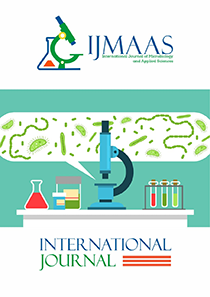Potentials of Lactic Acid Bacteria isolated from Traditional Fermented Foods as Starter Cultures in Yoghurt Production
Vol. 4, Issue 1, 2025
KEYWORDS
Abstract
The demand for functional foods has increased the interest in finding and developing more functional starter cultures that will not only serve as good starters but will also be used as human probiotics. The aim of this study was to isolate, characterize and identify Lactic Acid Bacteria (LAB) that can serve as good starters for yoghurt production and can also be used to complement existing yoghurt starters. A total of 120 samples of traditional fermented foods (Akamu, Ugba, Akpu, Nunu and Kunu) were screened. Out of 28 isolates recovered, 21 were considered presumptively after gram staining. Five LAB namely Lactobacillus plantarum, L. lactis, L. fermentum, Leuconostoc mesenteroides and L. pentosus had the highest percentage occurrence ranging from 56% – 28% with Akamu having the highest LAB occurrence. Isolates were Gram positive rod/cocci, mesophilic, acidiophilic, catalase negative and showed good growth at 2.5-6-5% NaCl concentration and diverse sugar fermentation abilities. Isolates had high tolerance to low pH and bile indicating their ability to withstand the acidic nature of the stomach. Similarly, they showed antibacterial activity against S. aureus, E. coli, P. aeruginosa and Bacillus. E. coli was inhibited most (14.33mm-16.67mm) while Bacillus had the least (9.67mm – 10.33mm). Antibacterial activity was affected by different temperature and pH ranges. Evaluation for use as starters, confirmed them to be safe as there was no haemolysis, gelatinase and DNase activity recorded. They also hydrolysed lactose to glucose and produced Exopolysaccharides (2.0 mm – 3.0mm). They demonstrated a strong performance as starters for yogurt production when compared with commercial starter cultures of S. thermophilus, L. bulgaricus and L. acidiophilus. Sensory evaluation and acceptability tests revealed that, yoghurt of L. fermentum was the most preferred in terms of colour, taste and general acceptability. While in terms of aroma and mouth feel, the yoghurt of L. lactis was the most preferred (6.82±0.10 and 6.49±0.01 respectively). In conclusion, this study has shown that L. plantarum, L. fermentum and L. lactis can be used as good starter cultures for yoghurt production.
Current: Vol. 4, Issue 1, 2025

Call for papers
The International Journal of Microbiology and Applied Sciences warmly welcome your valuable articles for publication.
